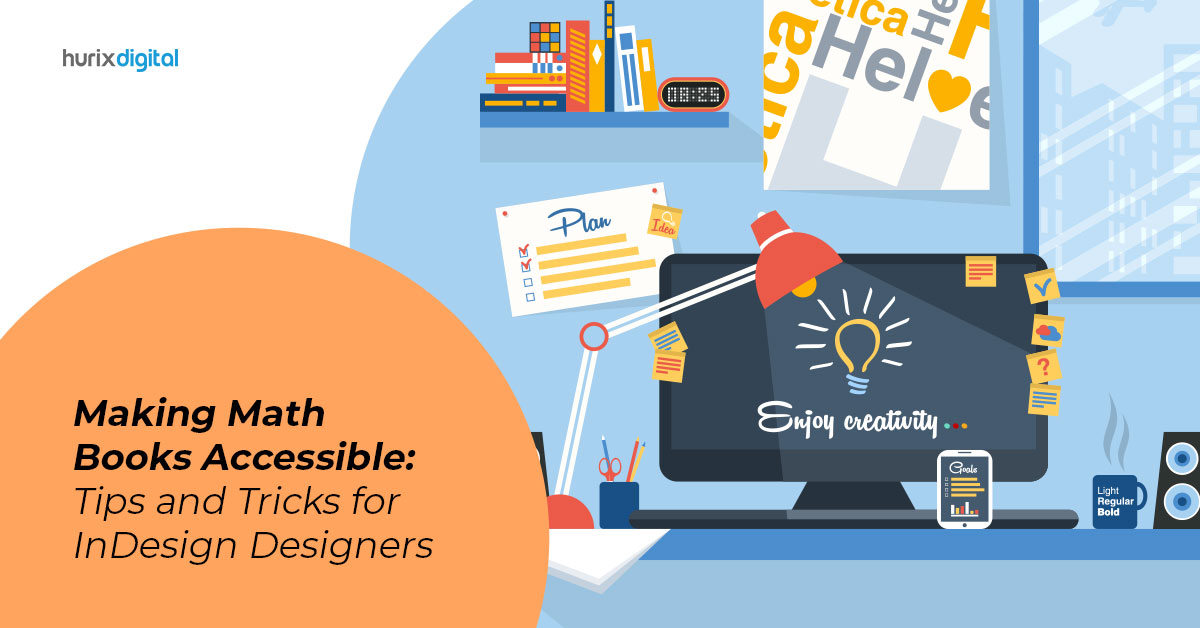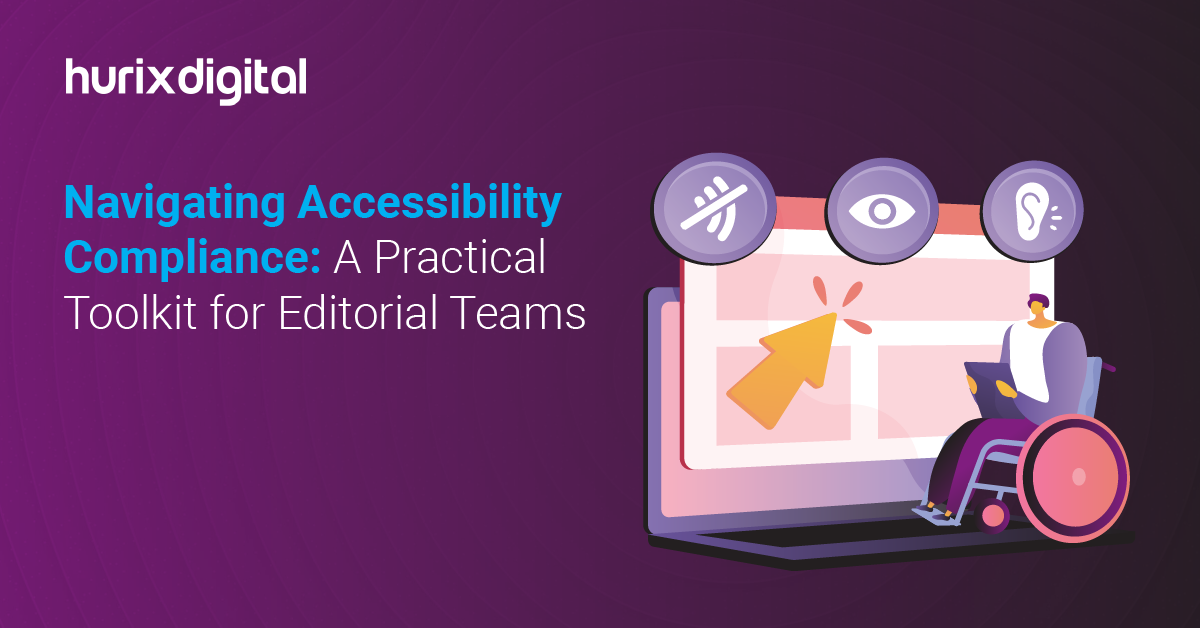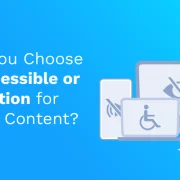
Making Math Books Accessible: Tips and Tricks for InDesign Designers
Summary
Discover best practices for designing accessible math books using Adobe InDesign, focusing on techniques to ensure content is usable by all readers, including those with disabilities.
Table of Contents:
- Tips for Designing Math Books that are Accessible and Inclusive
- Tips for Describing Equations and Fractions with Alt Text
1. Equations
2. Fractions - Conclusion
Designing math books for inclusivity and content accessibility requires careful consideration of the needs and preferences of diverse learners. By using clear language, visuals, alternative formats, appropriate fonts and color, cultural and linguistic sensitivity, and testing your design, you can create math books that are accessible and inclusive for all learners.
Tips for Designing Math Books that are Accessible and Inclusive:
- Use clear and concise language: Avoid using jargon and technical terms that may be confusing for learners. Use plain language that is easy to understand, and explain any technical terms or concepts that are essential.
- Use visuals: Visuals, such as diagrams, graphs, and illustrations, can be helpful in conveying mathematical concepts. Use them whenever possible to enhance understanding and digital accessibility.
- Provide alternative formats: Provide alternative formats such as audio, video, and alt-text options to accommodate different learning styles and abilities. Also, consider providing transcripts or captions for video content.
- Consider font size and style: Choose fonts that are easy to read, and ensure that the font size is appropriate for readers with different visual abilities. Sans-serif fonts, such as Arial or Helvetica, are generally easier to read than serif fonts, such as Times New Roman.
- Use color effectively: Use color to enhance understanding, but avoid relying solely on color to convey information. Use high-contrast colors to make the text and images stand out, and ensure that color blind users can distinguish between different colors.
- Consider cultural and linguistic diversity: Use examples and problems that reflect the diversity of your learners, and avoid culturally insensitive language or examples. Also, consider providing translations for non-native speakers of the language of instruction.
- Test your design: Test your design with a diverse group of learners to ensure that it is accessible and inclusive. Gather feedback and make necessary adjustments based on the feedback.
In addition to the general principles of inclusivity and web accessibility in design, there are several advanced options specifically for math textbooks, educators can ensure that all students have access to high-quality math education. Here are a few examples:
- Providing alternative text (alt-text) for all images/elements: This allows people who use screen readers or other assistive technology to understand the context of an image.
- Using color contrast: Using contrasting colors can help people with visual impairments distinguish between different elements on a page.
- Providing adjustable font sizes: This can be helpful for people with visual impairments or learning disabilities.
- Using clear and concise language: This helps people with cognitive or language disabilities understand the content on a page.
- Providing multiple language options: This allows people who speak different languages to access the content.
- Provide descriptive examples: Providing examples that describe the steps of a math problem in detail can help students who struggle with visualizing concepts.
- Use accessible math notation: Some students may struggle with traditional math notation. Using accessible math notation, such as MathML or LaTeX, can help these students understand the content.
- Include assistive technology: Incorporating assistive technology such as text-to-speech software or screen readers can help students with learning disabilities, visual impairments, or dyslexia.
- Avoid visual clutter: Too much visual clutter can be overwhelming for students with ADHD or sensory processing disorders. Using clear and consistent formatting can help reduce visual clutter.
- Provide access to calculators or other tools: Some students may need access to calculators or other tools to complete math problems. Providing access to these tools can help level the playing field for all students.
When describing an equation or a fraction with alt text, it is important to provide a clear and concise description of the content that conveys the same meaning as the visual representation.
Tips for Describing Equations and Fractions with Alt Text:
Equations:
- Start with a clear and concise description of the equation, including the names of any variables, constants, or operators.
- Use words to describe the structure of the equation, such as “equals”, “plus”, “minus”, “divided by”, “times”, etc.
- Use parentheses to indicate the order of operations.
- For more complex equations, break them down into smaller, more manageable parts and describe each part separately.
For example, the alt text for the equation “y = mx + b” could be: “Linear equation: y equals the product of x and m plus b.”
Fractions:
- Start with a clear and concise description of the fraction, including the numerator and denominator.
- Use words to describe the structure of the fraction, such as “over” or “divided by”.
- Use parentheses to indicate the order of operations.
- For more complex fractions, break them down into smaller, more manageable parts and describe each part separately.
For example, the alt text for the fraction “3/4” could be: “Three over four, a fraction representing three parts out of four equal parts.”
Apart from alt text, there are several other features that can improve the accessibility of typeset mathematical content. Here are a few examples:
- Font size and style: Use a legible font size and style that is easy to read for all users. Avoid using overly ornate or stylized fonts that can be difficult to read, especially for users with visual impairments.
- Color Contrast: Ensure that there is sufficient contrast between the text and background colors to make the content easy to read for users with low vision.
- Line spacing: Use appropriate line spacing to make the content easier to read, especially for users with dyslexia or other reading disabilities.
- Color coding: Use color coding to help distinguish between different elements in an equation or other mathematical expression, but ensure that the meaning is also conveyed through other means, such as text or symbols, for users who cannot distinguish colors.
- Braille and tactile graphics: Provide alternative formats such as braille and tactile graphics for users with visual impairments. Braille is a writing system that uses raised dots to represent letters and symbols, while tactile graphics use raised lines and textures to represent images and diagrams.
- Speech synthesis: Use speech synthesis technology to read out the mathematical content for users who are blind or have low vision.
Conclusion
Hurix have expertise in web accessibility solutions and have experience in creating digital content that meets WCAG (Web Content Accessibility Guidelines) compliance standards. We offer accessibility services such as accessibility testing, remediation, and consulting to ensure that their clients’ digital content is accessible to everyone, including people with disabilities. Hurix accessibility solutions focus on creating accessible eLearning courses, digital content, and mobile apps that comply with international accessibility standards. Our accessibility services include evaluating and remediating accessibility issues, creating accessible design and development, and providing accessibility training. Hurix has a strong understanding of accessibility and is committed to creating accessible digital content for our clients.
Related Article – Tips for Designing Math Books with InDesign

Vice President – Digital Content Transformation. He is PMP, CSM, and CPACC certified and has 20+ years of experience in Project Management, Delivery Management, and managing the Offshore Development Centre (ODC).






